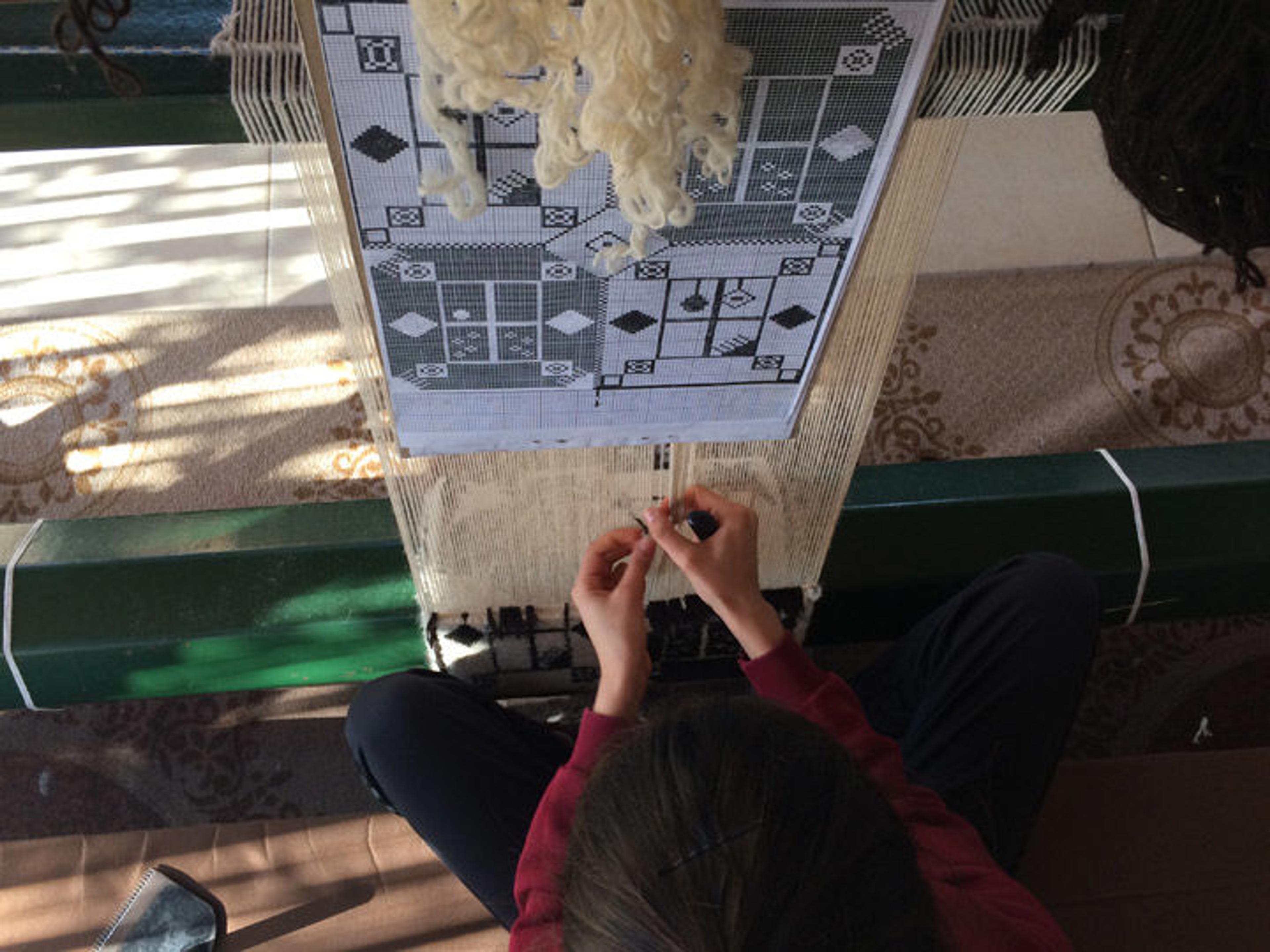
A weaver at the Can Carpet studio in Camlik, Turkey, works on a rug designed by one of The Met's high school interns, February 2016. All photos by the author, except where noted.
«The goal of the Doris Duke Foundation for Islamic Art, a supporter of my residency at The Met, is to promote the study and understanding of Islamic arts and culture—an objective that is very similar to my own as an artist. A great deal of my studio work explores the motifs, ideas, images, and themes that are found in both traditional Islamic arts as well as in Western, Orientalist depictions of the "East," the diverse region framed by the Mediterranean Sea and the Pacific Ocean. I have also been actively involved in advising and promoting a workshop of traditional Turkish rug weavers in the Meandros River valley, a cultural exchange that aims to keep this great artistic tradition alive by training new weavers.»
I attempt to combine all of these elements with current global events, my love of art history, and my own personal narrative in an attempt to make works that are complex, charged, sometimes humorous, and hopefully thought-provoking. I am interested in using existing symbols, as well as developing my own, to reinforce or to emphasize the content of my work.
As part of my residency, I had the opportunity to work with a group of The Met's fall 2015 high school interns. My project with the interns aimed to familiarize them with the style, symbols, and content of Islamic art, to think about a personal vocabulary of symbols, and to design a minder hali (small pile rug) that would later be woven in Turkey. We started out with a casual drawing session as a way to get to know each other, and to show them how mark-making—whether it be drawing, scrawling, or doodling—is an inherent and fundamental part of human creativity. As much as I love working with artists, I also enjoy helping "non-artists" realize that they, too, can draw.
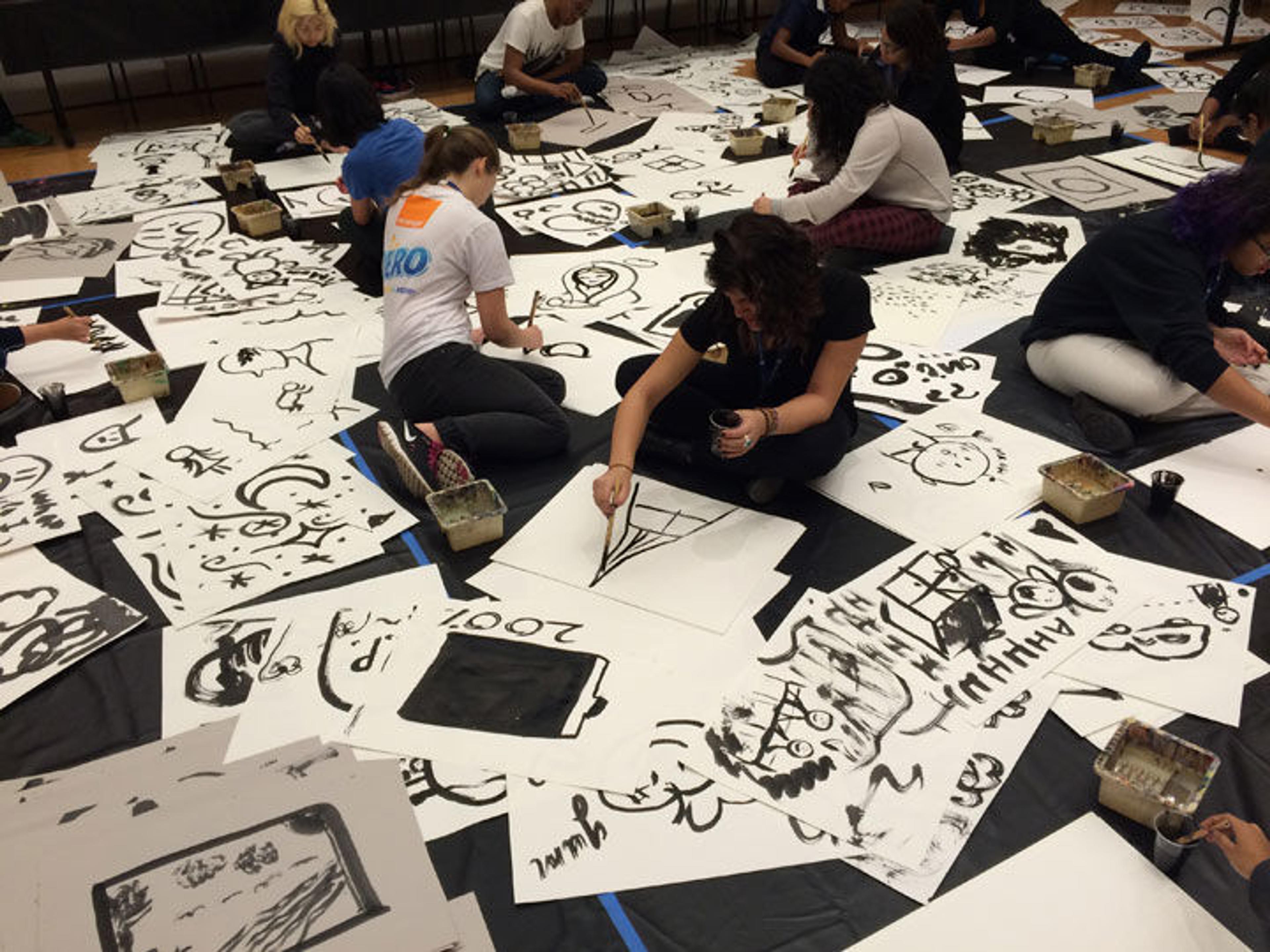
Met interns brainstorm design ideas during a drawing session
Over the course of these sessions, we worked on composing rug designs on the appropriate type of graph paper. These varied from Ottoman-inspired motifs and traditional Oriental-rug compositions to images related to identity, family, and popular culture. Most importantly, I, along with Betsy Gibbons and Emily Chow Bluck of The Met's Education Department, wanted the interns to focus on using symbols. With this goal in mind, we decided to also create a larger rug that would incorporate a motif from each intern's design as well as those created by Education Department staff.
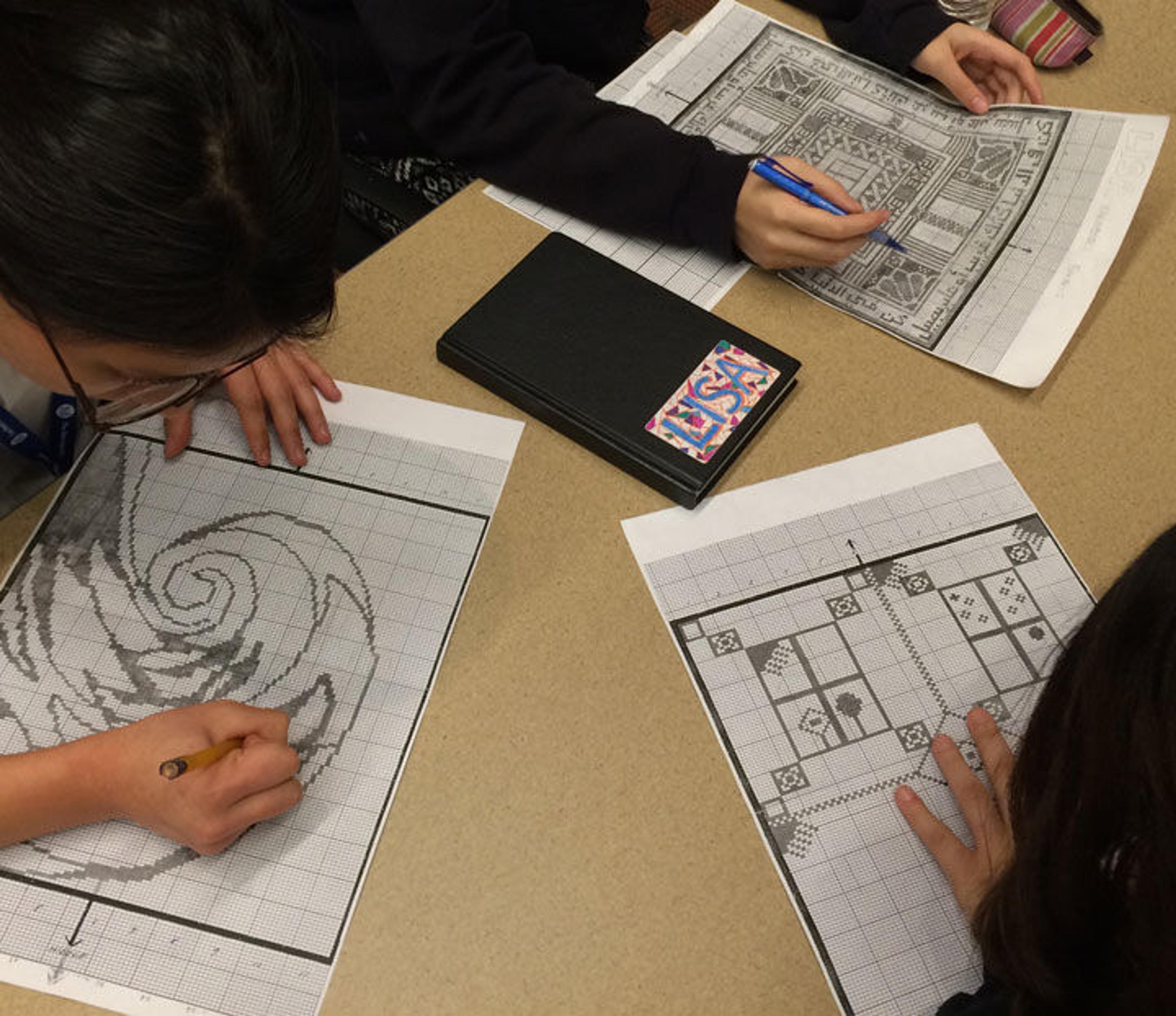
Met interns work on their rug designs
Understanding that Anatolian rugs were often made as journals that depicted the hopes for the weavers' futures was key in helping the interns see that rugs were much more than functional objects—they were actually loaded with personal and cultural meaning. An example I offered the students was my untitled rug from 2005 (below), the composition and colors of which are typical of traditional Anatolian rugs, but the motifs are strictly my own. This rug—one of a series depicting things for which I imagine people pray—expresses a desire for financial abundance while simultaneously criticizing greed. The border is a collection of different profiles; mouths open with coins passing between them, representing those who can only speak of money.
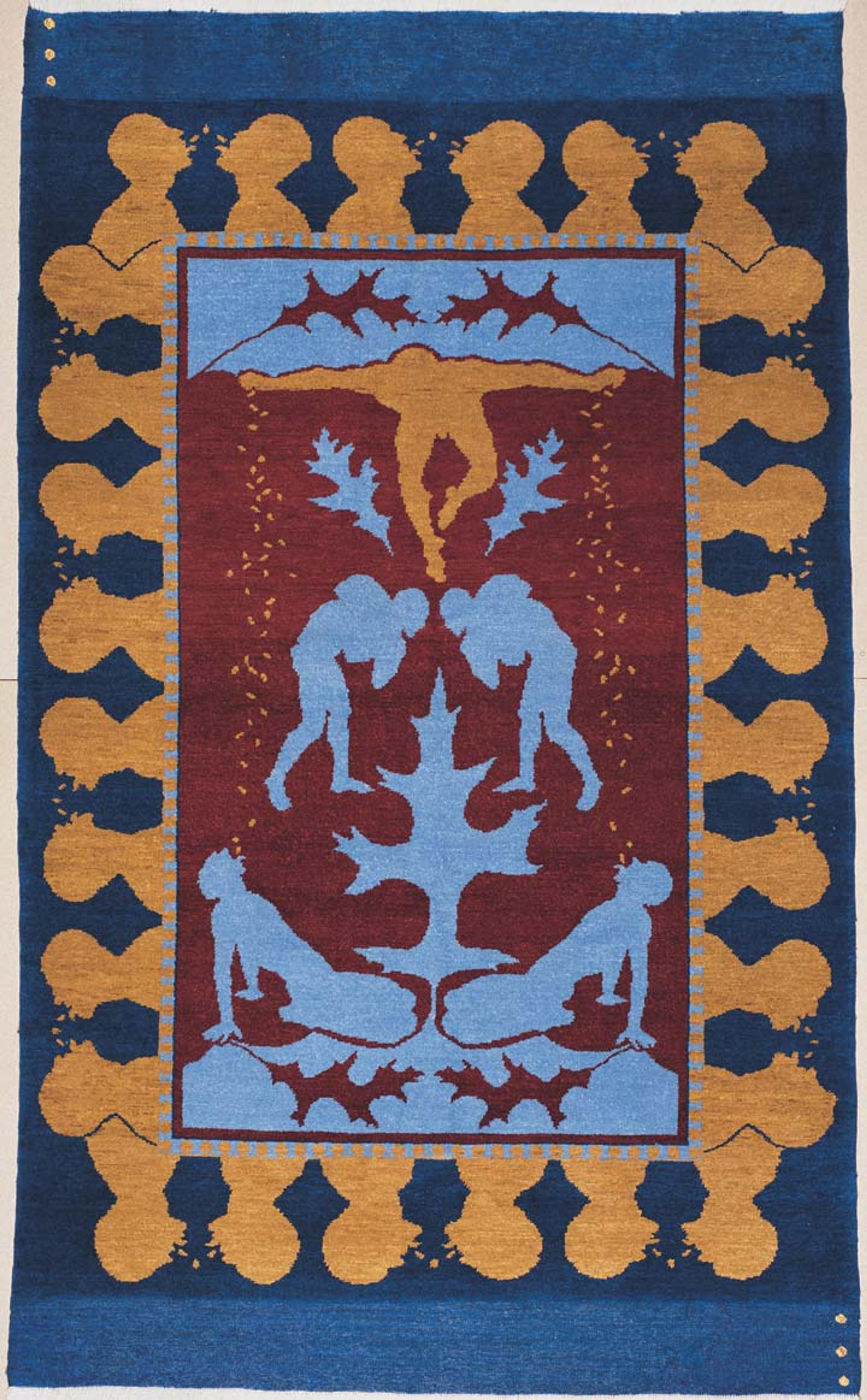
Peter Hristoff. Untitled, 2005. Wool; 79.5 x 51.5 in. Private collection. Photo courtesy of C. A. M. Gallery, Istanbul
In early February I flew to Turkey to document the creation of the rugs on the loom and to interview the weavers, asking them questions posed by the interns, such as: Is there any image or text you are uncomfortable weaving? Do you make rugs for yourselves? Do you believe that weaving is only a woman's practice?
The sun and laughter that filled the workshop of Osman Can in the small town of Camlik, just a few short miles from the ancient city of Ephesus, was a sharp contrast to other Turkish rug-making studios I had visited over the years. The weavers seemed genuinely engaged in the process, and they understood the importance of the tradition in which they were working—a truly Turkish art form that is dangerously close to extinction.
The Istanbul-based filmmaker Gul Erbil beautifully captured the young women working on the loom, and I hope to present this footage alongside the interns' rugs in June, when they will be on view to the public in The Met's Carson Family Hall. The weavers' pride in the Anatolian tradition of hali making and the responsibility they felt towards their work was truly wonderful. When I asked one of the weavers what she thought about the design she was working on, which an American student had created, she remarked on just how "familiar it seems . . . that we are more alike than different."
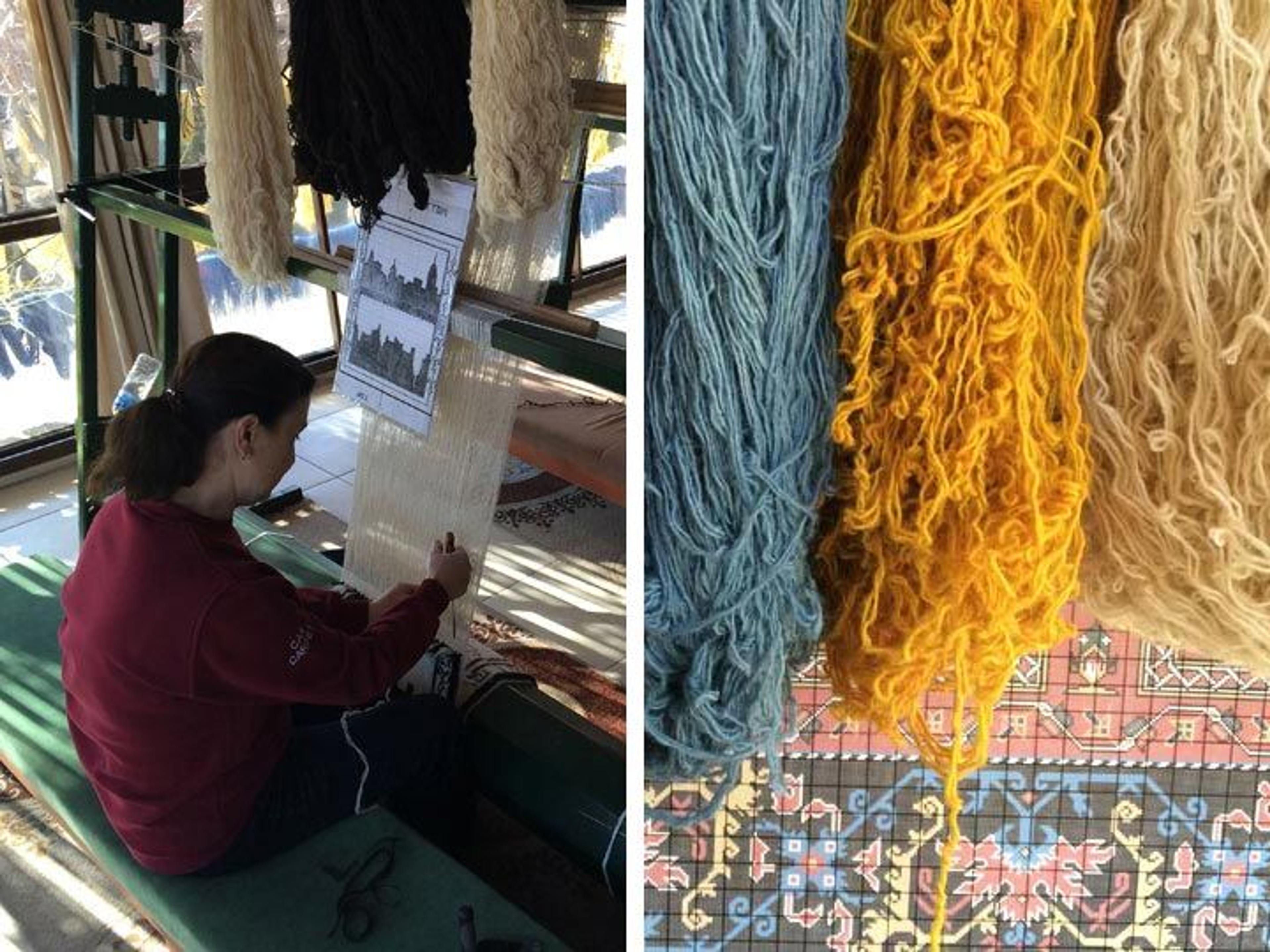
Left: A weavers at work on an intern's rug at the Can Carpet Studio. Right: A selection of naturally dyed wool on the loom
Related Event
MetFridays—Drop-in Drawing: On Your Mark with Artist in Residence Peter Hristoff
Friday, April 15, 6:30–8:30 p.m.
The Met Fifth Avenue - Gallery 153
Read all blog posts related to Peter Hristoff's residency at The Met.